Review: Suunto Spartan Trainer HR Multi-Sport Watch, A Tidy Watch at a Tidy Price
I have to admit I’m an absolute Garmin addict. I think I have purchased and reviewed every watch since my Triathlon career started, so objectivity of a review aside, I went into the review slightly bias. However having used the Suunto Spartan for the last few weeks, my loyalty has begun to waver and

I have to admit I’m an absolute Garmin addict. I think I have purchased and reviewed every watch since my Triathlon career started, so objectivity of a review aside, I went into the review slightly bias. However having used the Suunto Spartan for the last few weeks, my loyalty has begun to waver and with this price point and feature set its hard not to consider this watch when looking at your next purchase.
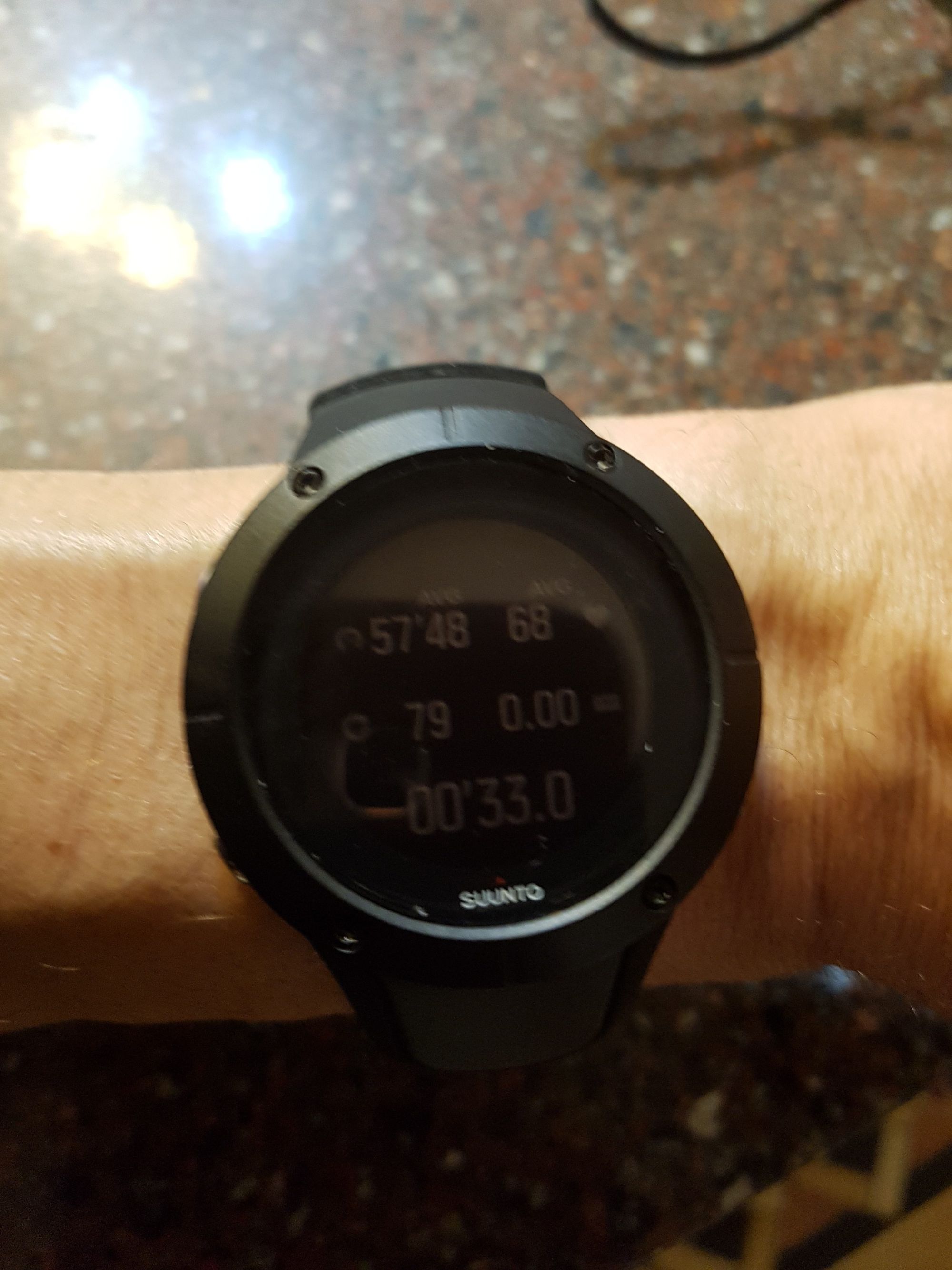
Price Point
I don’t usually start with the price of the first item, but it’s hard to get away from the sheer value for money that this watch represents. For the $399 price tag, you get a fully featured multisport watch with wrist-based heart rate support, Bluetooth Smart sensor support, activity plus sleep tracking and power meter support (including native support for running such as Stryd). Compare that to you nearest Garmin competitor you’re looking at close to $699 or $519 on the street. Suunto has taken the features of their high-end watches and jammed them into a more affordable model, that’s a lot of value for such a low price tag.
Aesthetics
The Suunto Spartan trainer comes in a variety of colours and finishes with the basic ‘silicone’ model coming in black, blue and turquoise, to a metal finish, in either gold or steel, with the associated $50 price tag. All of the colours are eye-catching (the blue is my personal favourite) and the steel looks just as good as the Garmin Fenix 5 in a business setting. One point to note, as you can see in the photos the Spartan band is fixed to the watch, which is a strange decision in this world of replaceable own and quick release technology and removes the ability to customise the watch.
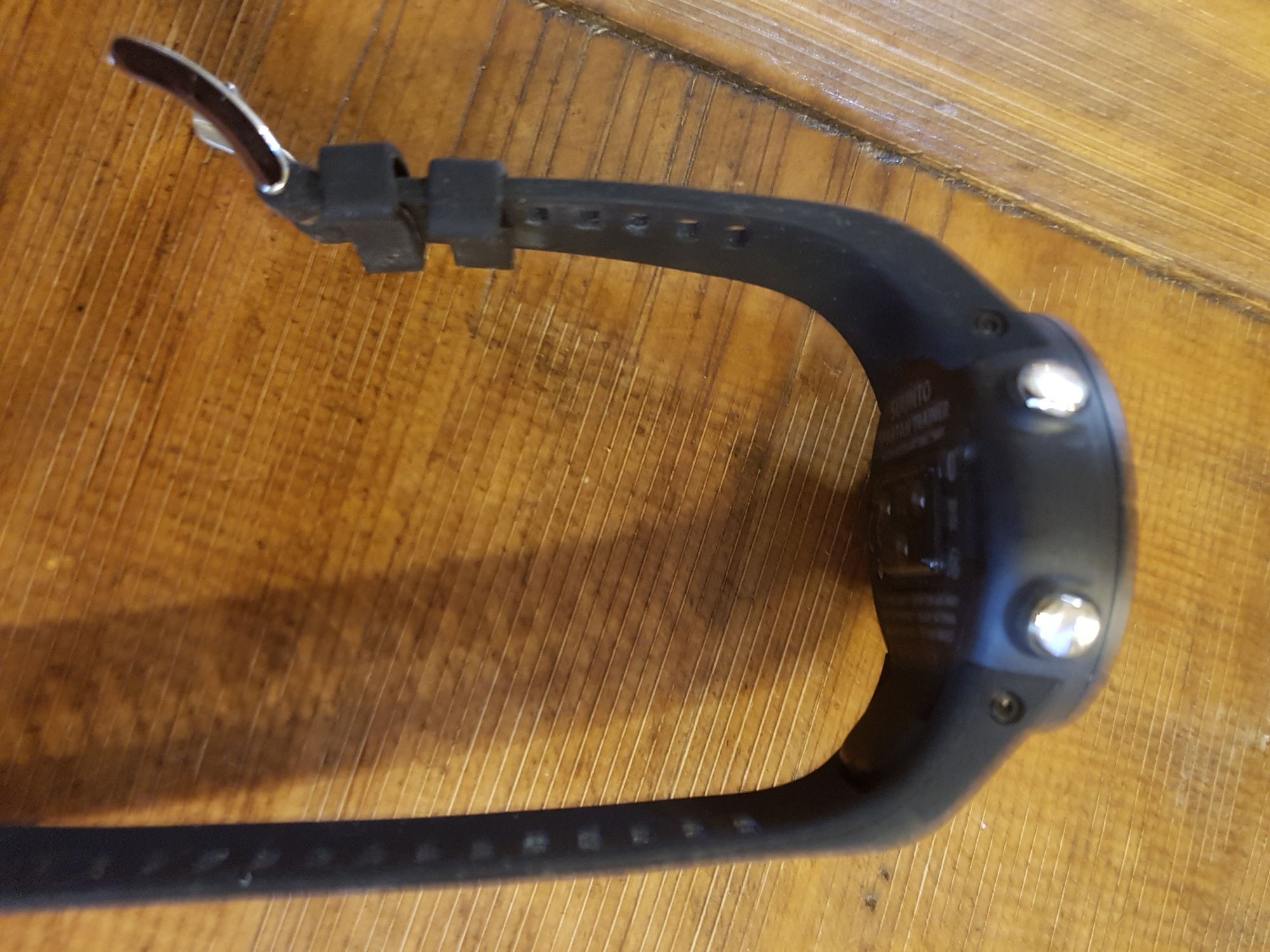
Size wise the Spartan Trainer is similar to that of the Fenix 5, however, it’s slightly thinner and lighter given its plastic aesthetic. Personally, as a triathlete with pathetically sized wrists, I found the Spartan to be a better fit on my arms than either the Fenix or the Fenix S.
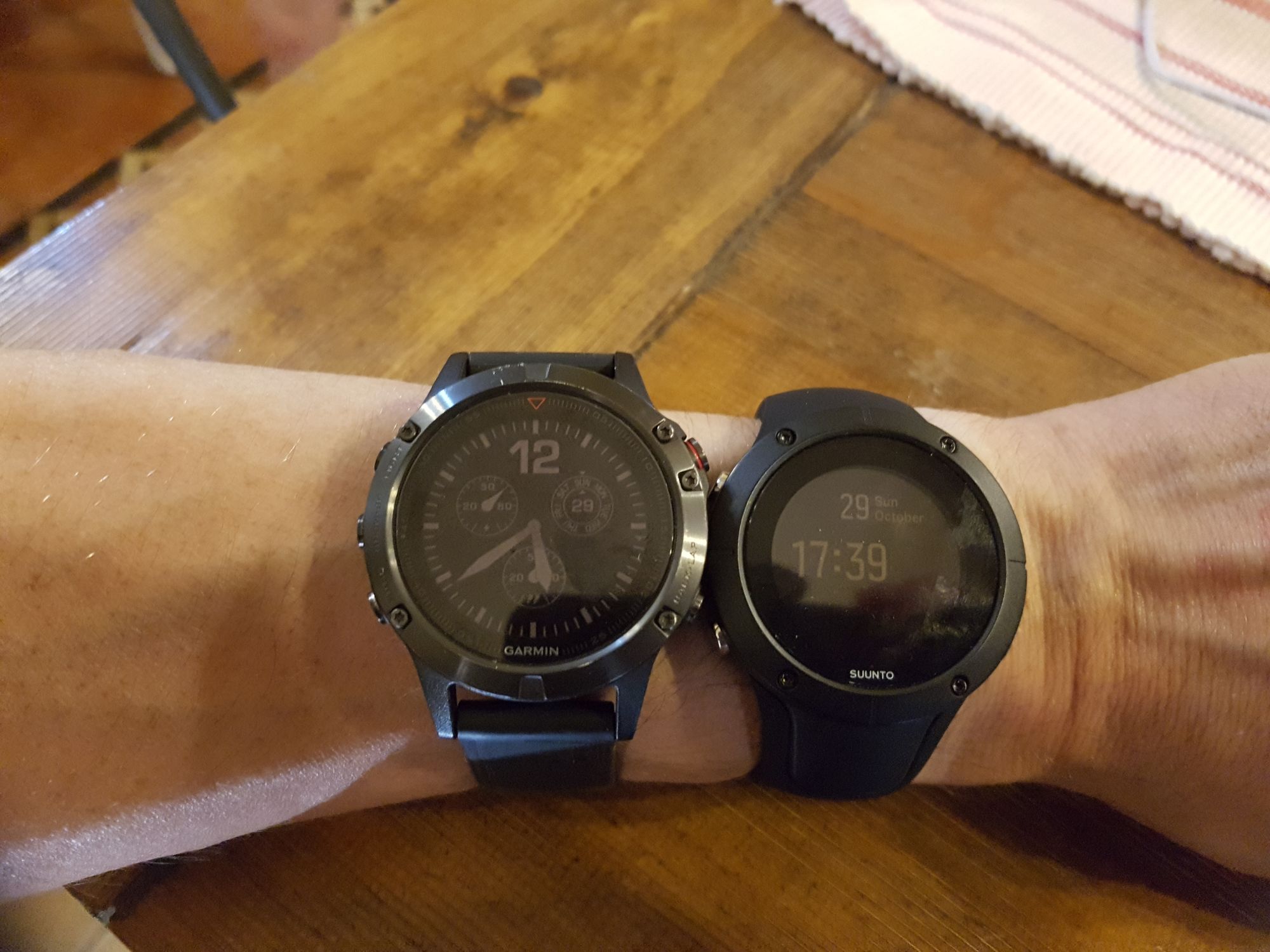
The watch has a non-touch screen (a good thing in my opinion) with three buttons on the right side controlling the selection of your options, and two on the left side to select your screen brightness etc. There is an optical heart rate sensor on the back based on the Valencell technology and another proprietary charging point. Yah, more cables!
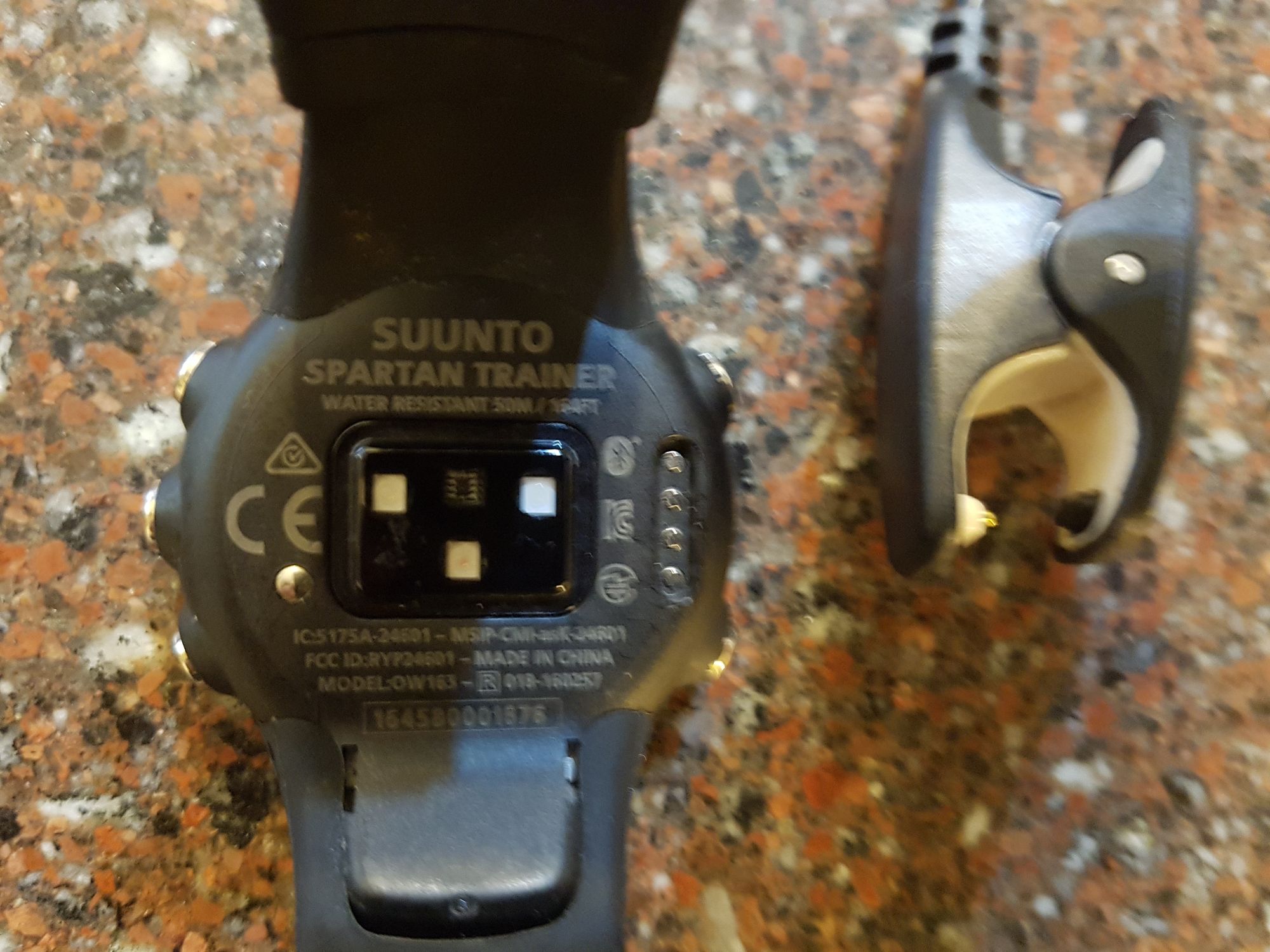
Features
The watch comes with 50m of waterproofing, which is enough for us triathletes unless your dolphin dives also double up as a pearl dive, over 80 sports modes to choose from and a rather weak 218×218 resolution. The resolution is my only gripe with the watch. The display is somewhat dull and straightforward, which is apparently a measure to keep the cost down and battery life up. However, it’s very noticeable against the higher end watches.
GPS support doesn’t have Glonass or Ultratrac support. However, this isn’t much of an issue unless you’re hiking off in the Sahara. I compared the GPS modes to my Fenix 5, 910 Cycling computer and my Strava app on my phone, and all three (bar the phone) achieved reasonable accuracy within a percent or two.
Power wise, Suunto state 10 hours in regular GPS tracking, 16 hours extended battery and 30 hours in standby. I found that watch to hit the metrics, but you will need to watch the 16hours if you’re a back of the pack Ironman triathlete.
One surprising observation was with the optical heart rate measurement. I have always had problems with the Garmin Elevate’s inbuilt heart rate monitor since their inception in the Fenix 3, so much so that I have reverted to the chest based model. I mainly had trouble when transitioning from a swim straight into a run, where the sensors would wildly fluctuate. Now Garmin state that for complete accuracy the recommend using the chest strap anyway, however, I had no such issue with the Spartan trainer. I was able to use the heart rate monitors solely during my run and rides and the heart rate monitor disabled and re-enabled its self accurately during my swim to run training sessions. That is a big win for me.
The watch doubles as a fitness tracker, including steps, heart rate and sleep tracking. As triathletes we tend to not use these features as much, however, I did find myself wanting for my Heart Rate Variability measurements (see EliteHRV review if you’re looking to understand HRV.) The ‘casual fitness’ features didn’t seem as fleshed out as my Garmin.
Training Interfaces
The training interface is simple enough to use with multiple configurable fields and sports. Selecting a new training programme is as simple as choosing ‘exercise’ on the watch and your away. You can select the fields as you train or have them automatically rotate through. The buttons did seem a little harder to press than my Fenix and 920xt, a testament to the build quality, however, this is a minor gripe.
One feature that I absolutely love was the ‘how are you feeling’ question after training. This feature lets you log your mood to help plan you training and recovery. Athletes are starting to learn that it’s not just physical fatigue that is affecting your performance and the ability to track these softer metrics is a move in the right direction.
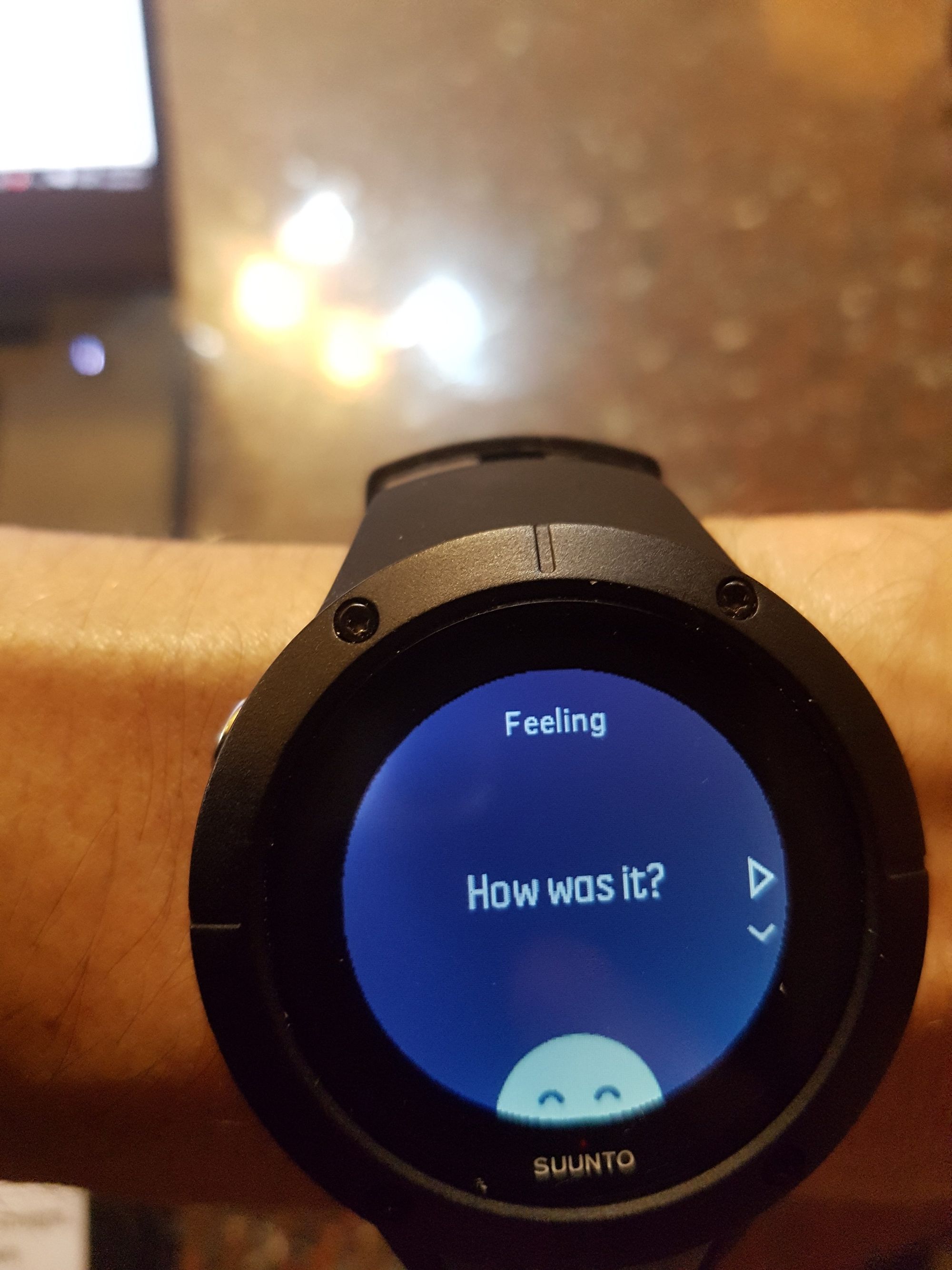
Mobile and Web Application
The mobile application, called Movescount is supported on both Android and iOS and is simple enough to setup and pair.
The interface is very basic, only really looking at your last activities and feelings over the 30 day period as well as your device and personal setup. One of the great features I noticed was the ability to set your personal heart rate and power settings for the individual not the device, (Garmin users rejoice!) However beyond that, most of your detailed configuration, planning etc. will be done on the website. Now as a long-term Garmin Connect user, I rarely go beyond my mobile application, which is jammed with content. Suunto really needs to invest some time on the mobile platform given the competition in the market.
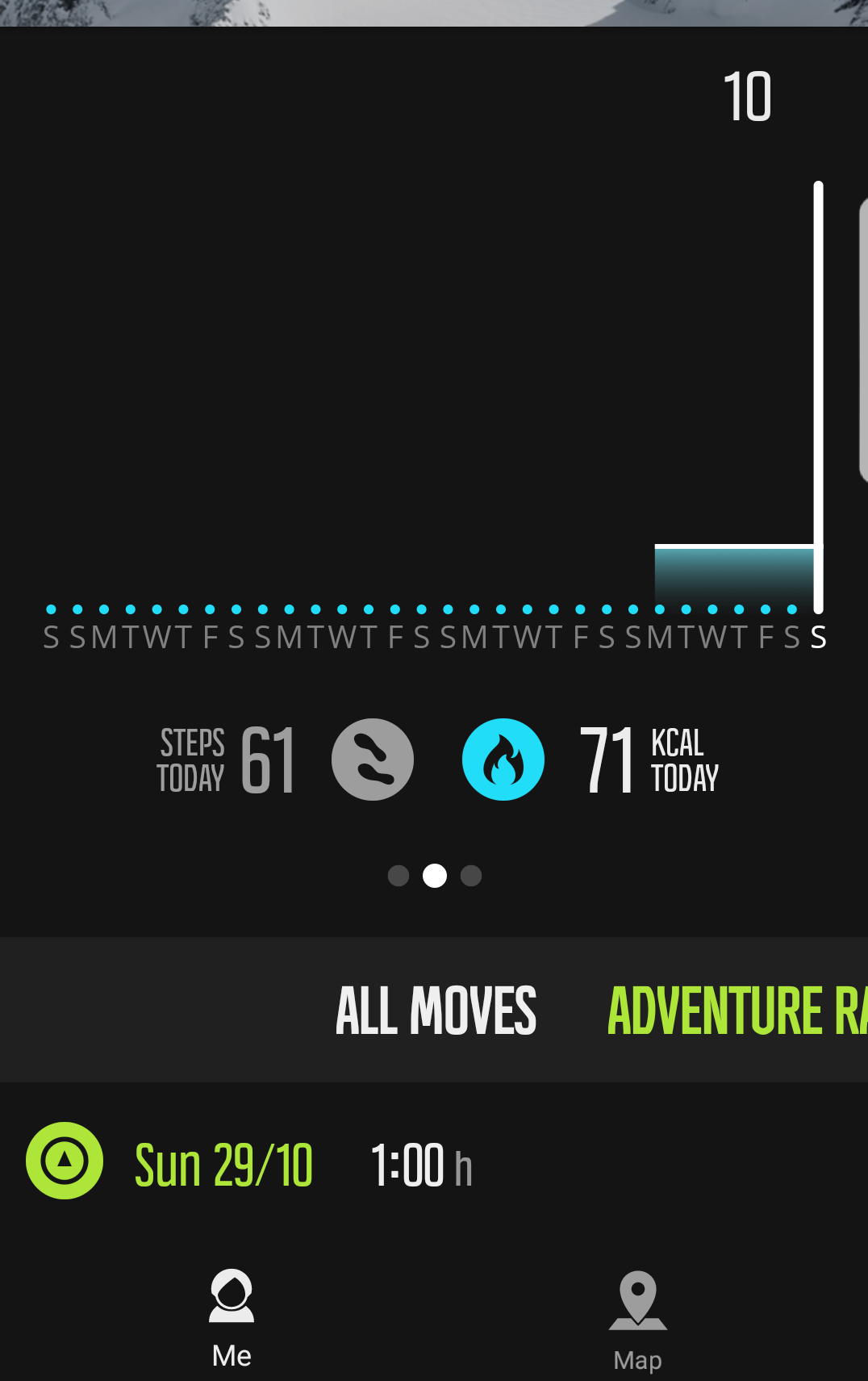
I’m not going to go into a detailed review of the Movescount website as its specific to Suunto and not the watch, however, it’s reasonably well developed, but nowhere near Garmin connect. Where it varies heavily from Garmin is its ability to download programmes specific to your goals (i.e. Sub 3hr Marathon) and sync them with your device… Pretty cool.
Conclusion
I have to say that I’m absolutely amazed by the features of this watch at its price point. It may not be as flashy as a Fenix 5 but at half the price, it’s a long shot from containing half the features and almost looks as good (especially the metal Bezel.)
Well, with a watch so fully featured who would I recommend it to? As Triathletes we love data, often too much, and for me, it really becomes less of a discussion around the watches and more the features of Movescount vs Garmin Connect. I think intermediate to advanced Triathletes would love the data produced by Connect, whereas beginner to intermediate triathletes would love the simplicity of Movescount and the app. Therefore I the Suunto Spartan Trainer would make a great beginner triathlete watch, so much so its now become my default recommendation for anyone looking for an entry-level watch!


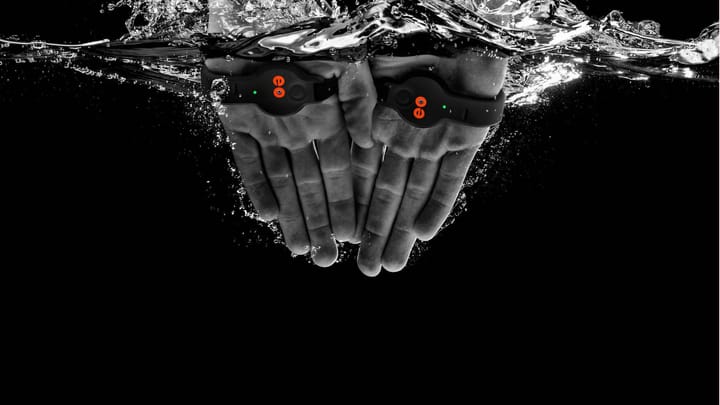
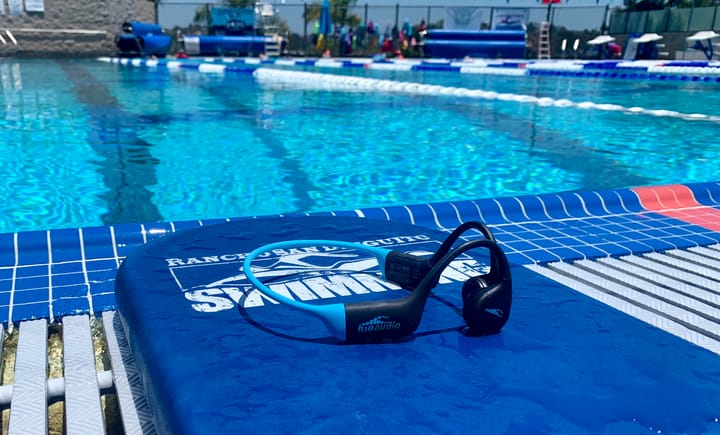
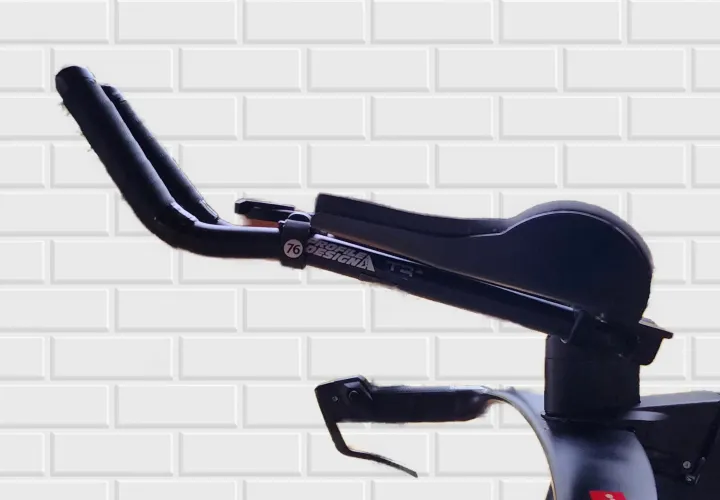
Comments ()